Welcome to our comprehensive guide on growing and caring for spaghetti squash! Whether you’re a gardener or just starting, this article will equip you with all the knowledge you need to cultivate this versatile and delicious vegetable right in your backyard/garden. From seed selection to harvest and beyond, we’ve got you covered.
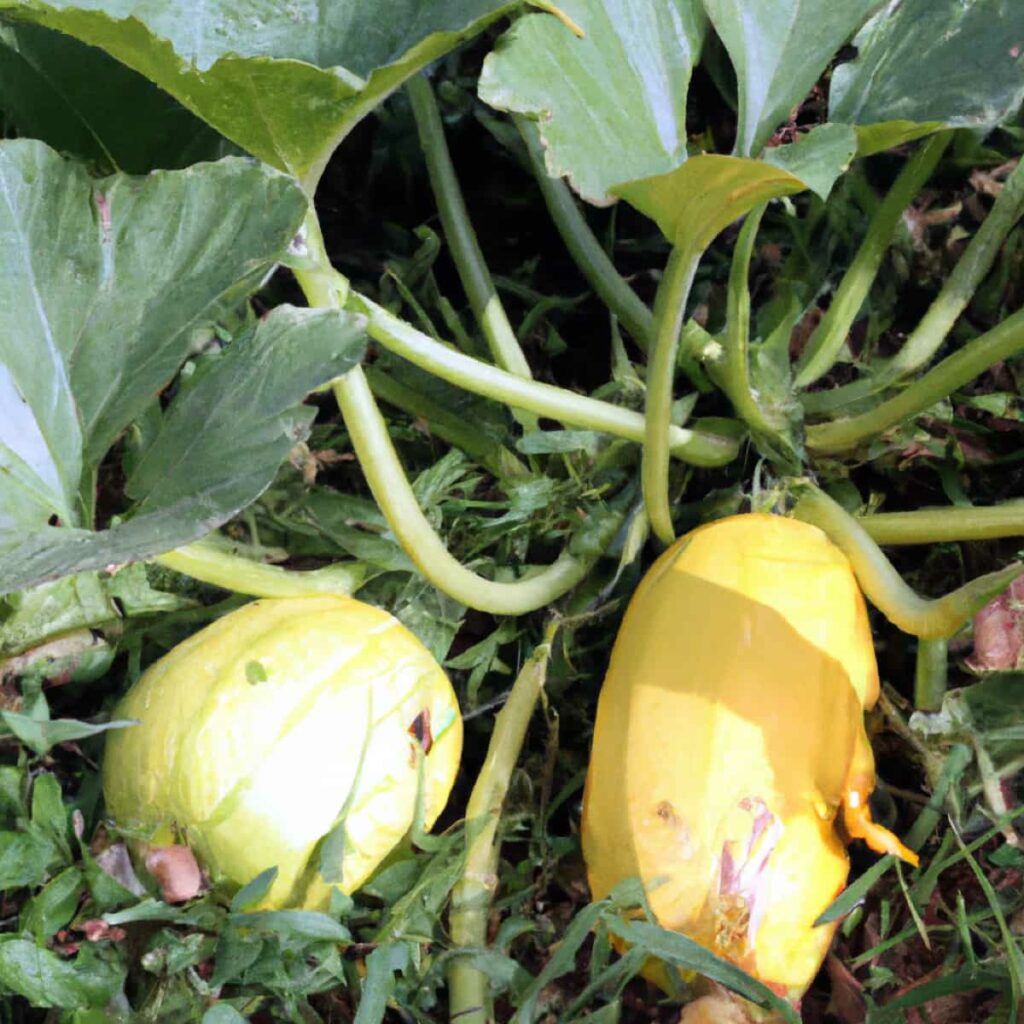
We’ll provide easy-to-follow instructions, ensuring that you have a successful and rewarding spaghetti squash growing experience. Get ready to savor the flavors of homegrown spaghetti squash in your favorite recipes as we take you on a journey from garden to table! Let’s dive in and get growing!
Growing and Caring for Spaghetti Squash
What is Spaghetti Squash?
Spaghetti squash, a favorite winter squash variety, offers a healthy alternative to pasta while incorporating more veggies into your meals. Once cooked, its interior can be easily shredded into noodle-like strands with a fork, resembling spaghetti. Growing spaghetti squash is surprisingly straightforward, requiring sufficient garden space.
By understanding its growth requirements, you can ensure your spaghetti squash reaches its typical size of 4-5 inches in diameter and 8-9 inches in length. Other members of the winter squash family include acorn, butternut, delicata, and buttercup squash. These squash varieties have hard rinds and a dry environment for months.
In case you missed it: Optimizing Tamarind Orchard Management: A Month-by-Month Maintenance Guide for High Yields and Profit
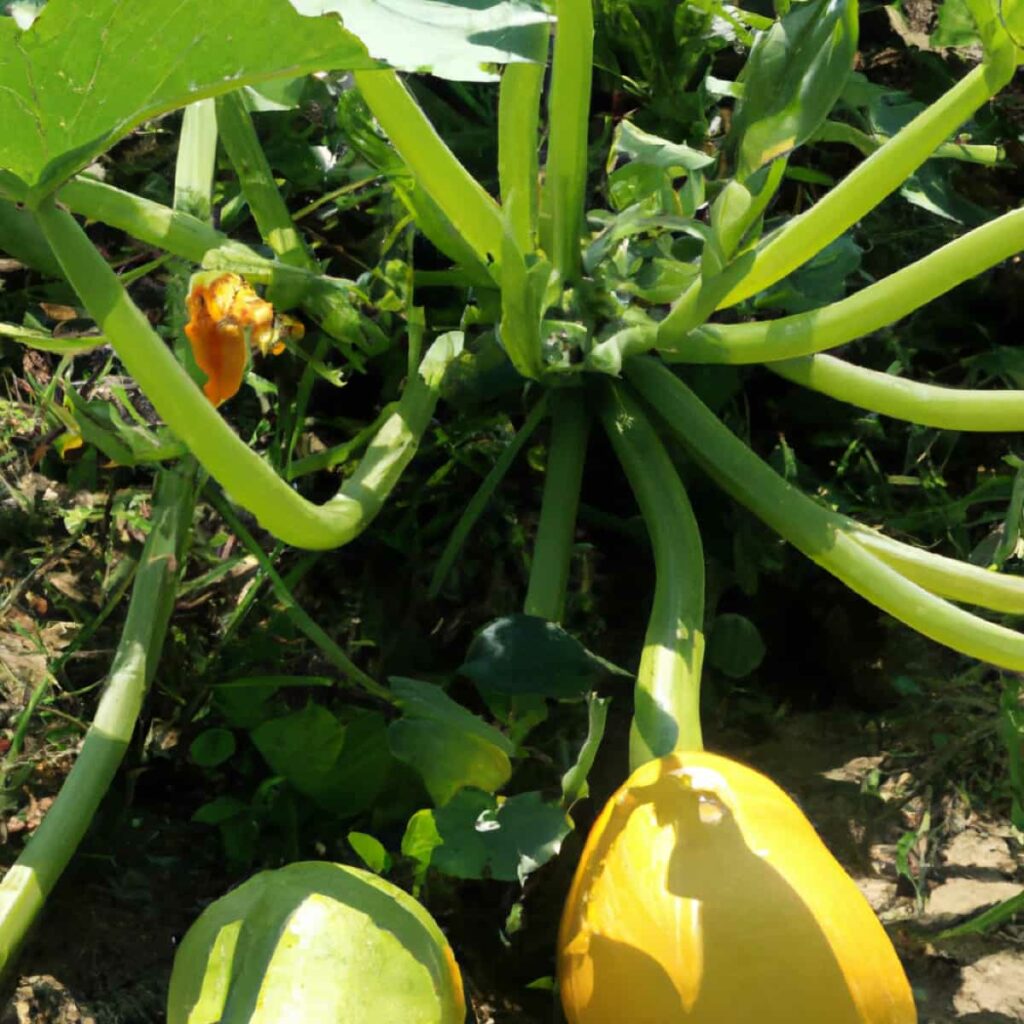
How to Grow Spaghetti Squash from Starting Seeds Indoors
- Choose a 3-inch wide pot and plant the seeds about 1 inch deep in an organic potting mix. Add plant food containing phosphorus and potassium for essential nutrients. Place 3-4 seeds in each pot, ensuring damp soil.
- Find a warm and sunny area for the seeds to germinate, with a consistent temperature of around 65°F (18°C). Once sprouted, move the seedlings to an area with full sunshine (6-8 hours daily) for further growth.
- Water the seeds and seedlings at least once a week. Check the soil’s moisture level by inserting a finger about one knuckle deep. Water if the soil feels dry to avoid over-watering.
- Transplant the seedlings outdoors when they have 2-3 leaves and are sturdy enough. Choose a sunny location with warm soil, typically after the last frost. Aim for late April planting with seedlings ready for transplanting by early- to mid-May. Protect the soil by covering it with black plastic to warm it up if needed.
- Select an outdoor spot with nutrient-rich soil that drains well. For better drainage, look for slightly acidic soil or add peat moss or shredded bark. Black plastic can warm up the soil if the weather is cool.
- Create 3-inch mounds in the soil, spacing them 24 to 36 inches apart. Make a pit in the center of each mound and gently place the seedling, covering the roots loosely with soil. Avoid overcrowding the plants and support the large fruits by allowing the vines to spread.
How to Grow and Plant Spaghetti Squash Outdoors
Plant in warm weather and avoid frost. Check the hardiness zone. In cooler climates, start seeds indoors, then transfer them outdoors. Choose a sunny space with minimal shade. Plant seeds 24-36 inches apart in rich, well-draining soil. Water seedlings weekly, and keep the soil moist. Remove weaker seedlings, and keep the healthiest ones.
In case you missed it: How to Grow and Care for Snapdragon Flowers: A Step-By-Step Comprehensive Guide

Preparing the Growing Area Tips for Spaghetti Squash
Prepare a warm, well-drained, and fertile growing area for spaghetti squash. Add up to 4 inches (10 cm) of organic compost. Plant seeds in rows, 4 feet (1 m) apart, 1-2 inches (2.5-5 cm) deep. Space rows 8 feet (2 m) apart. Use black plastic mulch to suppress weeds, conserve water, and promote soil warmth. Water the plants 1-2 inches (2.5-5 cm) per week, preferably with drip irrigation. Winter squash matures in about 90 days. Store them in a cool, dry area at 50-55 degrees F (10-13 C).
Best Soil for Growing Spaghetti Squash
- Incorporate at least 3 inches of organic matter, such as compost, into the soil.
- If the soil is heavy or drains poorly, consider using a raised bed for growing spaghetti squash.
- When planting the seeds, create small mounds of dirt and plant them about 1 inch deep on top of each mound.This helps with locating and watering the plants as the vines grow vigorously.
Planting Spaghetti Squash
Most varieties take 100 days to mature. In shorter growing seasons, start seeds indoors four weeks before the last expected frost or choose a fast-maturing variety. For longer growing seasons, sow seeds directly in the garden. Avoid transplanting seedlings, as it can delay growth. Plant seeds directly in well-drained soil, either in mounds or hills for poor drainage or ground planting for ample space. Another option is to use squash rounds to fill wire cylinders with organic matter and sow seeds. In all methods, ensure proper spacing and provide mulch for moisture retention.
Fertilizing Spaghetti Squash Vines
To ensure healthy spaghetti squash vines, provide them with proper nutrition. Start with fertile soil enriched with compost. Avoid nitrogen-rich fertilizers, leading to excessive vine growth and fewer fruits. Instead, choose an organic granular fertilizer with higher phosphorous content. Apply two tablespoons when the plants are 6 inches tall and another three tablespoons when the vines flower. Alternatively, apply organic liquid fertilizers every 3 to 4 weeks by mixing according to instructions and watering the base of the plant.
In case you missed it: Berry Orchard Management: Essential Month-wise Maintenance Guide
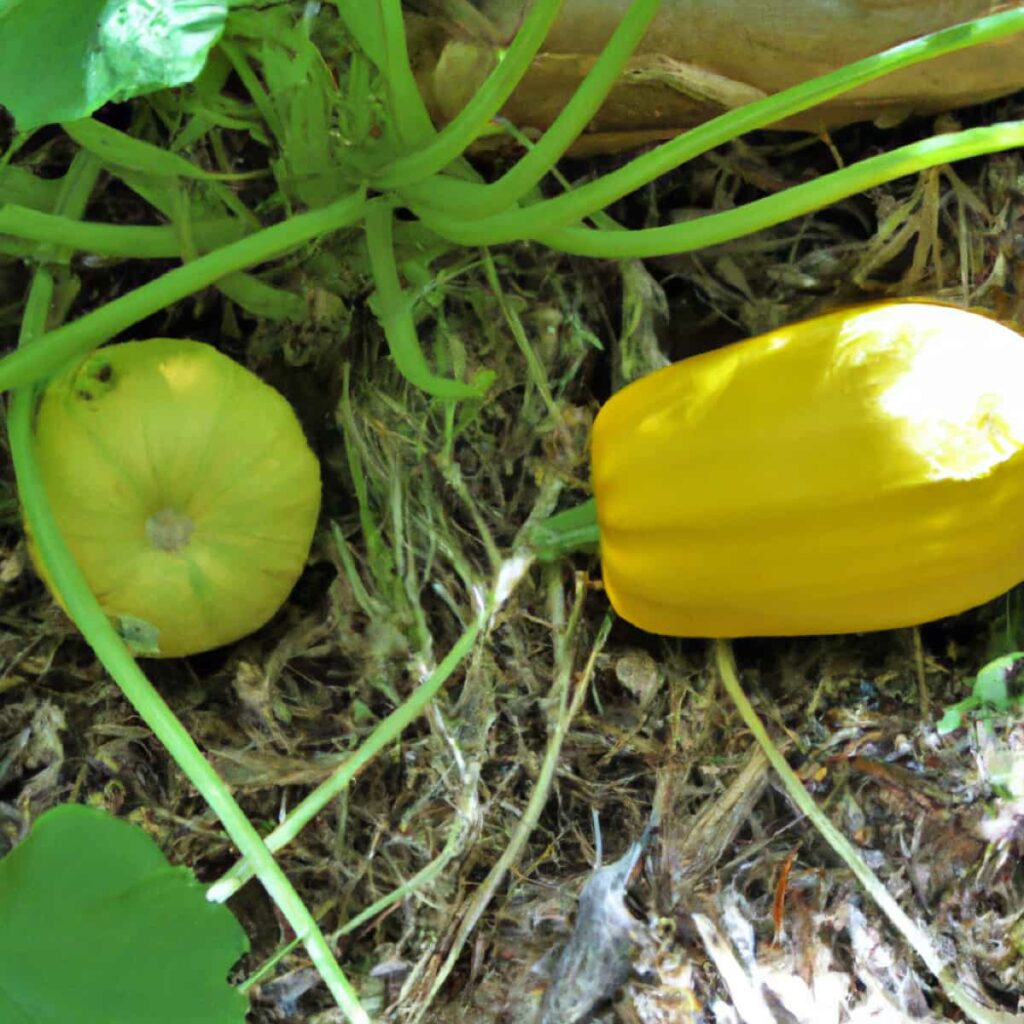
Growing the Spaghetti Squash Vines Vertically
To save space in your garden, consider growing spaghetti squash vines vertically. Set up a strong trellis or fence for support. Grid panels or wooden fences can work well. Since the delicate tendrils struggle to grip the fence, you’ll need to train and tie the vines or attach chicken wire for them to latch onto.
Essential Care and Maintenance for Spaghetti Squash
- Remove blossoms that appear after summer to prioritize the development of existing squash.
- Prevent rot by placing a tile or other non-biodegradable object under each fruit to separate it from the soil.
- Handpick and remove pests like squash bugs and cucumber beetles. Regularly check for insects in blossoms and under large leaves.
- Water at the soil level to prevent mildew on leaves. If mildew occurs, use a fungicide spray to control it.
In case you missed it: Harvest Fresh and Healthy: Best Top 10 Vegetables for Terrace Garden/Rooftop Farming
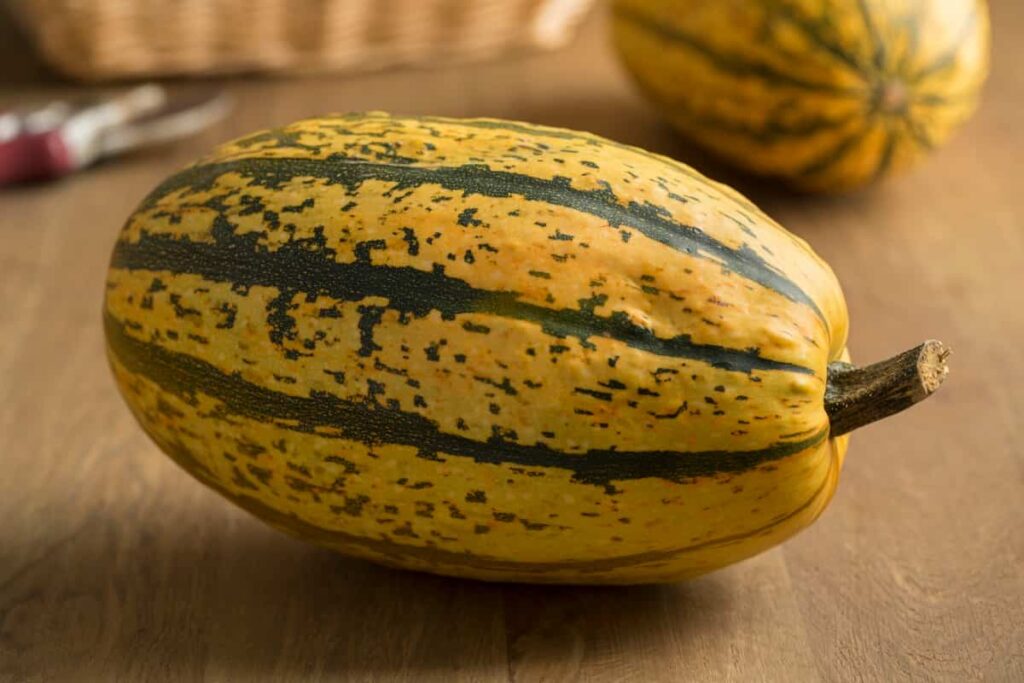
How to Water Spaghetti Squash Plants
To properly water spaghetti squash plants, they should be provided 1-2 inches of water per week. Rain or watering ensures the soil remains consistently moist throughout the growing season. Lightly mulch around the plants to reduce evaporation. Water in the morning or with an automated drip system to allow foliage to dry before sunset and prevent mildew issues.
Harvesting and Storing Spaghetti Squash
- Harvest spaghetti squash when the fruit changes from white to pale yellow, then to golden yellow.
- The squash should be around 8 to 9 inches long and 4 to 5 inches in diameter.
- Check the rind by pressing your thumbnail; it should be tough to pierce.
- Look for a slightly lighter yellow spot on the bottom if the fruits are on the ground.
- Harvest the squash as they ripen, leaving unripe fruits on the vines to continue maturing.
- Harvest all the squash before the first fall frost to prevent damage and reduce shelf life.
- Cut the fruits from the vine, leaving a 1-2 inch stem section intact.
- Harvest when the color has changed to yellow or golden yellow.
- Avoid pulling the squash; cut it from the vine.
- Spaghetti squash is nutritious, rich in minerals and vitamins great source of fiber and complex carbohydrates.
- It can be baked or boiled and used as a side dish or main entrée.
- Growing it organically ensures a chemical-free and delicious harvest.
In case you missed it: Top 10 Vegetables to Grow With the Help of a Pergola
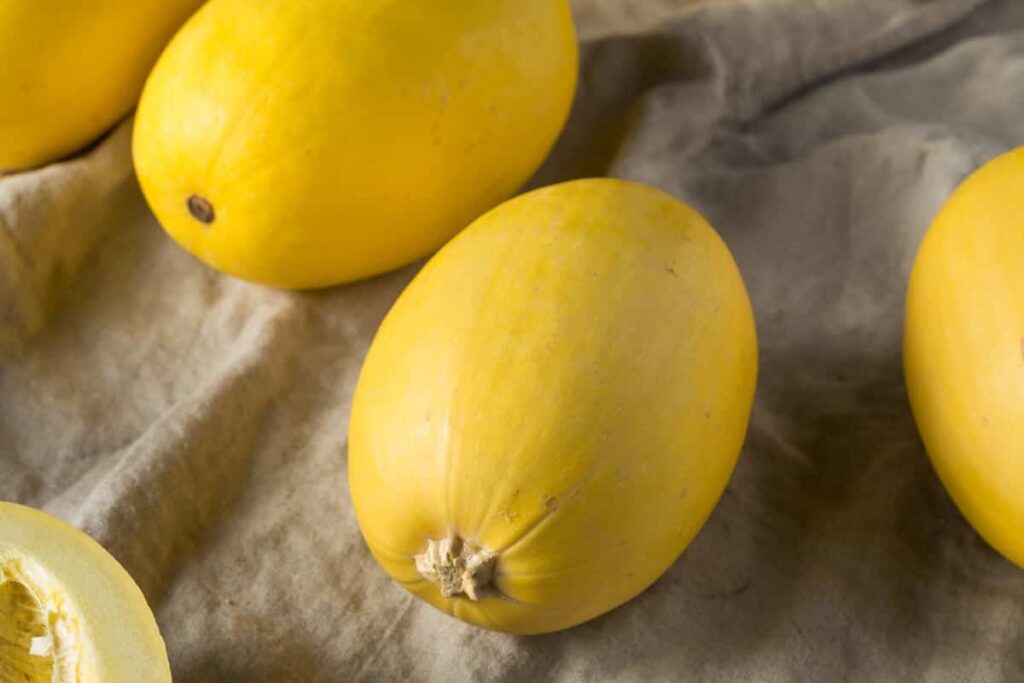
Conclusion
Growing and caring for spaghetti squash requires attention to soil preparation, planting techniques, fertilization, watering, and pest control. Harvest the mature fruits, store them properly, and enjoy the nutritious and delicious benefits of homegrown spaghetti squash in your meals.
- Budget Friendly Sheep Shed Ideas: Cheap and Low-Cost Tips
- How Much Do Cattle Farmers Make: Revenue Streams in Cattle Farming
- Management Pests and Diseases in Your Cotton Field
- Sheep Farming Business Plan for Beginners
- Aquaponic Farming at Home: A Step-By-Step Guide
- Profitable Village Farming Business Ideas in 2024
- High-Yield Aquaculture: Fast-Growing Fish for Farming
- Effective Fish Pond Construction Techniques for Beginners
- Irrigation and Water Management in Pineapple Farming
